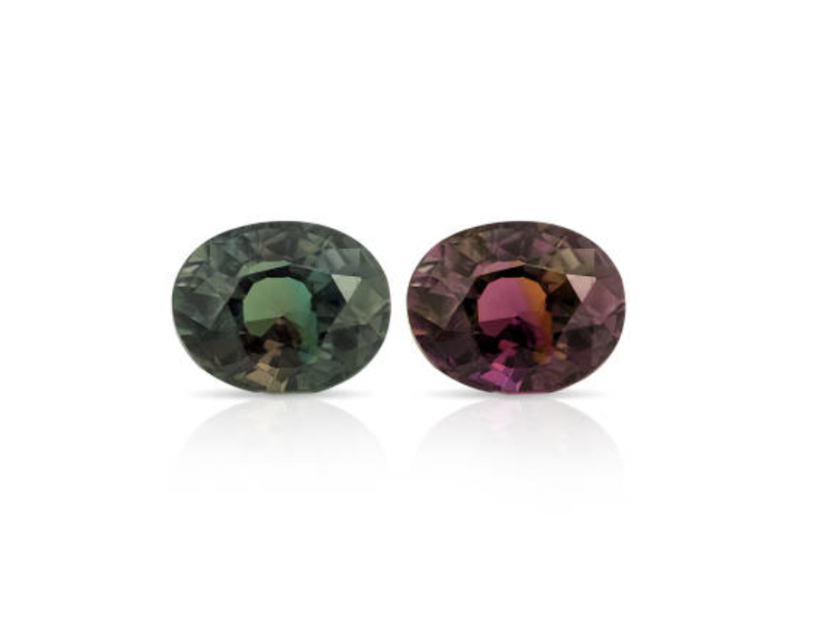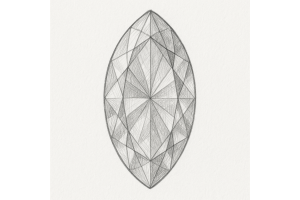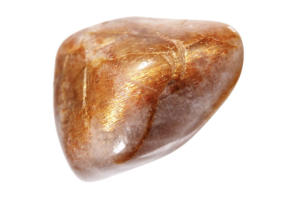GBP
/
GBP
/
Shipping to:
Currency:
How to Identify a Genuine Alexandrite: A Guide to Spotting the Real Deal
Alexandrite is a remarkable and rare gemstone, celebrated for its unique ability to change colour under different lighting conditions.
This captivating feature, combined with its scarcity, makes alexandrite highly sought after and, consequently, a target for imitations.
If you're considering acquiring this gem, it's essential to know how to distinguish a genuine alexandrite from synthetic or simulated versions.
In this guide, we'll explore the key characteristics of authentic alexandrite and provide practical tips to help you identify the real deal.
The Unique Colour Change of Alexandrite
One of the most distinctive features of alexandrite is its colour change phenomenon.
In natural daylight or fluorescent light, genuine alexandrite typically appears green to bluish-green.
Under incandescent or candlelight, it transforms to a purplish-red or reddish hue.
This dramatic shift is due to the complex way alexandrite absorbs light, influenced by the presence of chromium ions in its crystal structure.
When assessing an alexandrite's colour change:
- Observe the Stone Under Different Light Sources: View the gemstone in natural daylight and then under incandescent light to witness the colour transition. A genuine alexandrite will exhibit a noticeable and distinct change.
- Evaluate the Intensity of the Colour Change: High-quality natural alexandrites display a strong and clear colour change. Stones with weak or minimal shifts may be of lower quality or possibly synthetic.
For those curious about gemstone options that share bold, non-traditional aesthetics, check out non-traditional engagement rings.
Examining Clarity and Inclusions
Natural alexandrites typically contain inclusions—internal characteristics that occur during their formation.
Common inclusions in genuine alexandrite include:
- Silk Inclusions: Fine needle-like inclusions that can create a soft sheen.
- Liquid Veils: Feather-like inclusions indicative of natural formation processes.
In contrast, synthetic alexandrites often have fewer inclusions and may appear "too perfect."
However, some lab-grown stones might contain inclusions that mimic natural ones, making visual inspection alone insufficient for definitive identification.
If you're interested in other stunning gemstone pieces, check out the full selection of gemstones
Understanding Synthetic and Simulated Alexandrite
The market offers both synthetic (lab-created) and simulated alexandrites:
- Synthetic Alexandrite: These are created in laboratories and have the same chemical composition as natural alexandrite. They exhibit similar colour change properties but are generally more affordable.
- Simulated Alexandrite: These stones, such as colour-change sapphires or spinels, merely mimic the appearance of alexandrite without sharing its chemical or physical properties.
Distinguishing between natural and synthetic alexandrite can be challenging.
Synthetic versions may display more vivid colour changes and lack natural inclusions.
Simulants, on the other hand, often have different refractive indices and densities.
Curious how lab-grown stones compare? Take a look at this helpful article on lab-grown diamonds vs gemstones.
Testing Methods for Alexandrite
To accurately identify genuine alexandrite, consider the following methods:
- Refractive Index Measurement: Using a refractometer, measure how light bends as it passes through the gemstone. Genuine alexandrite has a refractive index between 1.741 and 1.760.
- Spectroscope Analysis: This tool can detect specific absorption lines unique to alexandrite, helping differentiate it from other stones.
- UV Fluorescence: When exposed to ultraviolet light, natural alexandrite may exhibit a red fluorescence, though this can vary based on the stone's origin.
While these tests can be informative, they often require specialised equipment and expertise.
You might also enjoy reading about how gemstones and diamonds are formed to deepen your appreciation for what makes alexandrite so unique.
Seeking Professional Evaluation
Given the complexities in identifying genuine alexandrite, consulting with a certified gemologist is highly recommended.
Professional gemological laboratories, such as the Gemological Institute of America (GIA), can provide detailed analyses and certification.
These evaluations offer peace of mind and are especially crucial for significant investments.
If you’re exploring colourful engagement pieces with character and distinction, be sure to check out the gemstone engagement rings collection.
Tips for Purchasing Alexandrite
- Request Certification: Always ask for a gemstone certificate from a reputable lab.
- Research the Seller: Purchase from established and trustworthy jewellers or dealers.
- Be Cautious of Deals That Seem Too Good to Be True: Authentic alexandrite is rare and commands high prices. Unusually low prices may indicate synthetic or simulated stones.
- Understand Return Policies: Ensure the seller offers a reasonable return policy in case the gemstone doesn't meet expectations upon further inspection.
Frequently Asked Questions
How rare is natural alexandrite?
Natural alexandrite is exceptionally rare, especially in larger sizes and with strong colour change properties. Its scarcity contributes to its high value in the gemstone market.
Can synthetic alexandrite match the quality of natural stones?
While synthetic alexandrites can closely mimic the appearance and properties of natural ones, they lack the rarity and historical significance, which are factors that contribute to the value of natural alexandrite.
Why does alexandrite change colour?
The colour change in alexandrite is due to the complex way the mineral absorbs light, influenced by chromium ions in its structure. This causes the stone to appear greenish in daylight and reddish under incandescent light.
Is it worth investing in an alexandrite without certification?
Purchasing alexandrite without certification is risky and not recommended. A certificate verifies its authenticity and protects you as a buyer.








